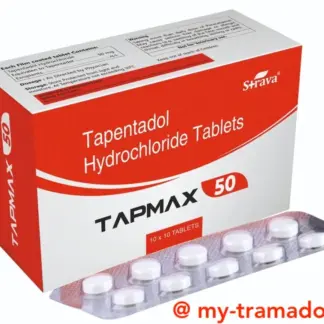Description
Valium, the brand name for diazepam, is a benzodiazepine medication widely prescribed for managing anxiety, insomnia, and other conditions. This potent sedative-hypnotic drug has been in use since the 1960s and remains one of the most widely recognized medications in its class.
uses
Valium is primarily intended for the treatment of anxiety disorders, including generalized anxiety disorder, panic disorder, and insomnia associated with anxiety. Additionally, it may be prescribed for the management of alcohol withdrawal symptoms, muscle spasms, and certain types of seizures.
Dosage Information
Available strengths and forms
Valium is available in various strengths and formulations, including tablets (2 mg, 5 mg, and 10 mg), oral solution (5 mg/5 mL), and injectable solution (5 mg/mL). The tablets are the most commonly prescribed form.
Typical dosages for various conditions
The dosage of Valium varies depending on the condition being treated and the individual’s response to the medication. For anxiety disorders, the typical starting dose is 2 to 10 mg, taken two to four times daily. For alcohol withdrawal, the recommended dose is 10 mg, three to four times during the first 24 hours, followed by gradual tapering. For muscle spasms, the usual dose is 2 to 10 mg, three to four times daily.
Dosage adjustments for special populations (e.g., elderly, hepatic/renal impairment)
Elderly patients and those with hepatic or renal impairment may require lower doses of Valium due to increased sensitivity and delayed elimination. Dose adjustments may be necessary to avoid excessive sedation and potential adverse effects.
Mechanism of Action
Explanation of how Valium works in the body
Valium exerts its effects by enhancing the activity of gamma-aminobutyric acid (GABA), an inhibitory neurotransmitter in the brain. GABA binds to specific receptors, leading to a decrease in neuronal excitability and promoting a calming effect.
Pharmacodynamics and pharmacokinetics
Valium is rapidly absorbed after oral administration, with peak plasma concentrations reached within 1 to 1.5 hours. It has a relatively long elimination half-life of 20 to 100 hours, allowing for less frequent dosing. Valium is metabolized primarily in the liver and excreted in urine.
Indications and Usage
Approved indications (e.g., anxiety disorders, alcohol withdrawal, muscle spasms)
Valium is approved for the treatment of anxiety disorders, including generalized anxiety disorder and panic disorder. It is also indicated for the management of alcohol withdrawal symptoms and the relief of skeletal muscle spasms associated with conditions such as tetanus, cerebral palsy, and certain spinal cord injuries.
Off-label uses
Although not officially approved, Valium may be used off-label for the treatment of insomnia, seizure disorders, and certain types of chronic pain, such as neuropathic pain or myofascial pain syndrome.
Contraindications
Conditions or situations where Valium should not be used
Valium is contraindicated in individuals with known hypersensitivity to diazepam or other benzodiazepines. It should also be avoided in patients with severe respiratory depression, acute narrow-angle glaucoma, and certain forms of sleep apnea.
Precautions and warnings
Valium should be used with caution in elderly patients, those with impaired hepatic or renal function, and individuals with a history of substance abuse or dependence. It may cause drowsiness and impair psychomotor performance, so patients should avoid activities that require alertness until they know how the medication affects them.
Adverse Effects
Common side effects
The most common side effects associated with Valium include drowsiness, fatigue, dizziness, muscle weakness, and impaired coordination. Some patients may also experience dry mouth, constipation, or blurred vision.
Serious or rare side effects
Serious or rare side effects of Valium may include respiratory depression, paradoxical reactions (e.g., excitement, rage, hostility), cognitive impairment, and suicidal ideation. Long-term use can lead to physical and psychological dependence.
Potential for dependence and withdrawal symptoms
Valium has a high potential for abuse and can lead to physical and psychological dependence, especially with prolonged use or high doses. Abrupt discontinuation after prolonged use may result in withdrawal symptoms such as anxiety, insomnia, seizures, and tremors.
Drug Interactions
Medications that may interact with Valium
Valium may interact with various medications, including other central nervous system (CNS) depressants (e.g., opioids, alcohol), certain antidepressants, antifungal medications, and medications that inhibit or induce hepatic enzymes.
Food or supplement interactions
There are no known significant interactions between Valium and specific foods or supplements. However, consuming grapefruit juice may increase the bioavailability of Valium and potentially lead to increased side effects.
Usage Guidelines
Valium tablets should be swallowed whole, with or without food. The oral solution can be mixed with water, juice, or other liquid. For optimal effectiveness, Valium should be taken as prescribed, avoiding abrupt discontinuation or dose changes without consulting a healthcare professional.
Patients taking Valium should be monitored for signs of excessive sedation, respiratory depression, and cognitive impairment. Regular monitoring for the development of dependence or tolerance may also be necessary, especially during long-term use.
Gradual tapering of Valium is recommended to minimize the risk of withdrawal symptoms when discontinuing treatment. Abrupt discontinuation should be avoided, especially after prolonged use or high doses.
Overdose Information
Symptoms of overdose
Symptoms of a Valium overdose may include excessive sedation, confusion, slurred speech, impaired coordination, respiratory depression, and coma.
Treatment and management
In case of a suspected Valium overdose, immediate medical attention is required. Treatment may involve supportive measures, such as maintaining respiratory function and monitoring vital signs. In severe cases, flumazenil, a benzodiazepine antagonist, may be administered to reverse the effects of Valium.
Pregnancy and Breastfeeding Considerations
Potential risks during pregnancy and breastfeeding
Valium should be used during pregnancy only if the potential benefits outweigh the risks. Untreated anxiety or seizure disorders may pose risks to the developing fetus. Valium has been associated with an increased risk of congenital malformations and neonatal complications when used during pregnancy.
Recommendations for use during pregnancy/breastfeeding
Valium is excreted in breast milk and may cause sedation or respiratory depression in nursing infants. Breastfeeding while taking Valium is generally not recommended unless the potential benefits outweigh the risks.
Storage and Handling
Proper storage conditions
Valium tablets and oral solution should be stored at room temperature, away from excessive heat, moisture, and light. Protect from freezing and keep out of reach of children and pets.
Disposal instructions
Unused or expired Valium should be disposed of properly, following local regulations for the disposal of controlled substances. It is recommended to consult with a pharmacist or local waste management authority for specific disposal instructions.
Additional Information
Regulatory status (e.g., controlled substance classification): Valium is classified as a Schedule IV controlled substance in the United States, meaning it has a lower potential for abuse compared to Schedule III substances but still carries a risk of dependence and abuse.
Patient counseling information
Patients should be advised about the potential for drowsiness, impaired coordination, and the risk of dependence associated with Valium use. They should be cautioned against operating machinery or engaging in activities that require alertness until they know how the medication affects them.







